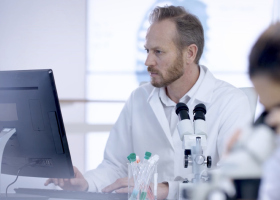Good Pharmacovigilance Practices
Good pharmacovigilance practices, also referred to as GVPs, are guidelines for pharmaceutical companies to follow to help prevent harm to humans caused by adverse drug reactions (i.e., ADRs) from approved pharmaceutical drugs. The main objectives and roles of good pharmacovigilance practices are:
- Promote the safe and effective use of pharmaceutical products
- Delivery timely information about the safety of medical products
- Evaluate observational data on pharmaceuticals, including drugs and medical, excluding blood components
- Provide guidance on the conduct of pharmacovigilance for specific product types or populations in which medical products are used
The guidance and rules set forth by good pharmacovigilance practices can vary slightly from one country to the next. Most countries have regulatory authorities that oversee compliance with good pharmacovigilance practices.

Let’s jump in and learn:
- What Is Pharmacovigilance?
- The European Medicines Agency and Good Pharmacovigilance Practices
- The Food and Drug Administration and Good Pharmacovigilance Practices
- Health Canada and Good Pharmacovigilance Practices
- Good Pharmacovigilance Practice Compliance
- Broad Benefits from Good Pharmacovigilance Practice
What Is Pharmacovigilance?
Although all medical products undergo rigorous testing for safety and efficacy through clinical trials before they are authorized for use, the testing only involves a relatively small number of selected individuals for a short period of time. Pharmacovigilance provides oversight of medical products over their entire lifecycle once they have been licensed for use. The science and activities that are part of pharmacovigilance help identify and evaluate previously unreported adverse reactions.
Pharmacovigilance includes the science and activities that provide a framework for the detection, assessment, understanding, and prevention of:
- Adverse drug effects
- Counterfeit or substandard medicines
- Interaction between medicines
- Lack of efficacy of medicines
- Medication errors
- Misuse and/or abuse of medicines
Pharmacovigilance also helps to:
- Determine if action is required to improve the safety of a medical product
- Ensure that healthcare professionals and patients have access to accurate information about medical products
- Identify changes in the frequency or severity of known adverse effects
- Uncover previously unknown adverse effects
The roles of pharmacovigilance can be broken down into three categories.
1. Surveillance to support risk management and the assessment of adverse reaction data to identify patterns.
2. Operations that focus on collecting and recording information during preclinical development, early clinical trials, and gathering real-world evidence of adverse events reported by medical professionals and patients after medical products are authorized for commercial use
3. Systems that are developed to store and manage data relating to pharmacovigilance compliance at all levels of an organization
The European Medicines Agency and Good Pharmacovigilance Practices
The European Medical Agency (EMA) released guidelines for good pharmacovigilance practices in 2012. The EMA’s good pharmacovigilance practices are a set of measures drawn up to facilitate the performance of pharmacovigilance in the European Union (EU). The EMA’s good pharmacovigilance practices are divided into 16 modules, each of which covers one major process in pharmacovigilance.
Included in the EMA good pharmacovigilance practices is the establishment of the Pharmacovigilance Risk Assessment Committee (PRAC), which is responsible for assessing all aspects of the risk management of medicinal products. The objective of the PRAC is to ensure that medicines approved for the European Union market are optimally used by maximizing their benefits and minimizing risks.
The Food and Drug Administration and Good Pharmacovigilance Practices
The Food and Drug Administration (FDA) issued its guidance for good pharmacovigilance practices in 2005. These are only guidelines and do not establish legally enforceable responsibilities. Instead, good pharmacovigilance practices guidance describes the FDA’s current thinking on a topic and should be viewed only as recommendations unless specific regulatory or statutory requirements are cited.
The FDA’s good pharmacovigilance practices guidance covers medicinal products, including biological and vaccines as well as over-the-counter (OTC) drugs and medical devices. The objective is to ensure that these medical products are safe and effective for human use.
The laws governing this area are the Federal Food, Drug and Cosmetic Act (FDCA) and the FDA Code of Federal Regulations (CFR) Title 21. These outline the requirements for drugs and medical devices for human use and provide the legislative framework and requirements that are implemented at a federal level.
Health Canada and Good Pharmacovigilance Practices
In 2004, Health Canada implemented an inspection program for good pharmacovigilance practices. The program is meant to verify that Market Authorization Holders (MAH) and importers meet the requirements of sections of Canadian Food and Drug Regulations. It also is meant to ensure proper tracking of adverse drug reactions and other post-approval reporting requirements.
The following medical products marketed in Canada for human use are subject to good pharmacovigilance practice compliance inspections:
- Biologics, including biotechnology products, vaccines, and fractionated blood products
- Medical gasses
- Pharmaceuticals
- Radiopharmaceuticals
Excluded from good pharmacovigilance practice compliance inspections in Canada are:
- Hard surface disinfectants
- Natural health products
- Veterinary products
- Whole blood and blood components
Good Pharmacovigilance Practice Compliance
The main objectives that good pharmacovigilance practice compliance ensure are the safe and effective use of pharmaceutical products by continuously monitoring, collecting, and providing patients, healthcare professionals, and the general public with timely information about the safety of medical products. Regulatory agencies, such as the FDA, Health Canada, EMA, and the UK’s Medicines and Healthcare products Regulatory Agency (MHRA), can conduct a good pharmacovigilance practice compliance audit at any time in a product’s life cycle (i.e., during a clinical trial, during the regulatory review/approval process, or after a product is on the market).
To be prepared for all aspects of a good pharmacovigilance practice compliance audit, organizations need to regularly review their pre-marketing and post-marketing safety monitoring practices to ensure they are in compliance.
To prepare for a good pharmacovigilance practice compliance audit, organizations should have a strong methodology and processes to gather and organize the key requirements of all the applicable regulatory bodies. This should include strategy, infrastructure, tools, execution, and evaluation details.
Inspectors will review records and procedures to assess compliance, including processes for receiving, analyzing, submitting, and maintaining records about adverse drug reactions, unusual failures in the effectiveness of new drugs, and the preparation of annual summary reports and issue-related summary reports. Management and reporting of ADRs include:
- Quality planning
- Establishment of structures and planning that are integrated with consistent processes (e.g., clear written standard operating procedures)
- Quality control
- Verification at every stage of case documentation, including data collection and data management (e.g., correct data entry and coding), minimum requirements are met for case validation, that compliance, quality, and integrity of data (e.g., source data have to be recorded and stored)
- Quality assurance
- Monitor and evaluate the programs that have been established and how effectively the processes are being carried out (i.e., using audit systems)
- Quality improvement
- Corrections and improvements to the structures and processes that require updates and/or enhancements
A good pharmacovigilance practice compliant rating means that an organization complies with good pharmacovigilance practice regulations. Note that an organization may receive a compliant rating even if a number of areas of non-compliance have been identified. This is because the good pharmacovigilance practice compliance rating also considers the level of risk.
In these cases, the organizations would be required to take corrective actions. A good pharmacovigilance practice non-compliant rating could mean either that the establishment has not shown that its activities comply with regulations, or that safety information is missing, which could lead to serious health risks. In either case, non-compliance organizations will need to take immediate corrective actions.
Broad Benefits from Good Pharmacovigilance Practice
Pharmacovigilance is central to drug safety. Good pharmacovigilance practice is predicated on the need for better planning and completing quality controls of pharmacovigilance activities. It provides an agreed-upon framework that helps organizations define better quality control systems and ensure the quality of safety of their use.
Following good pharmacovigilance practice benefits everyone. Consumers have confidence that medical products are safe and effective. Organizations, which are required to collect and maintain vast amounts of information to meet good pharmacovigilance practice compliance requirements, are able to also use that data for further research and development or for submissions needed for authorities to allow new markets to be accessed.
Egnyte has experts ready to answer your questions. For more than a decade, Egnyte has helped more than 16,000 customers with millions of customers worldwide.
Last Updated: 28th February, 2022

